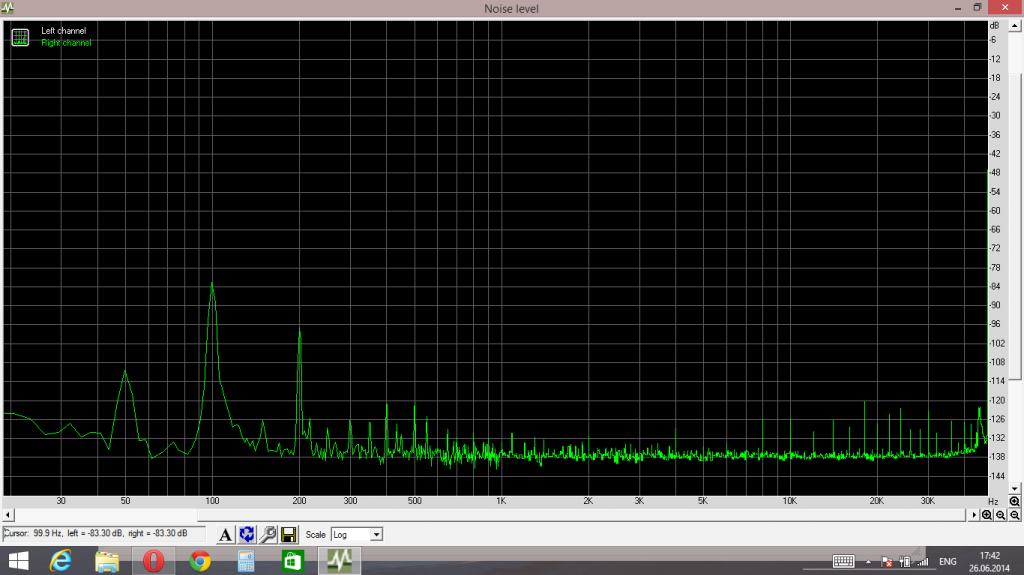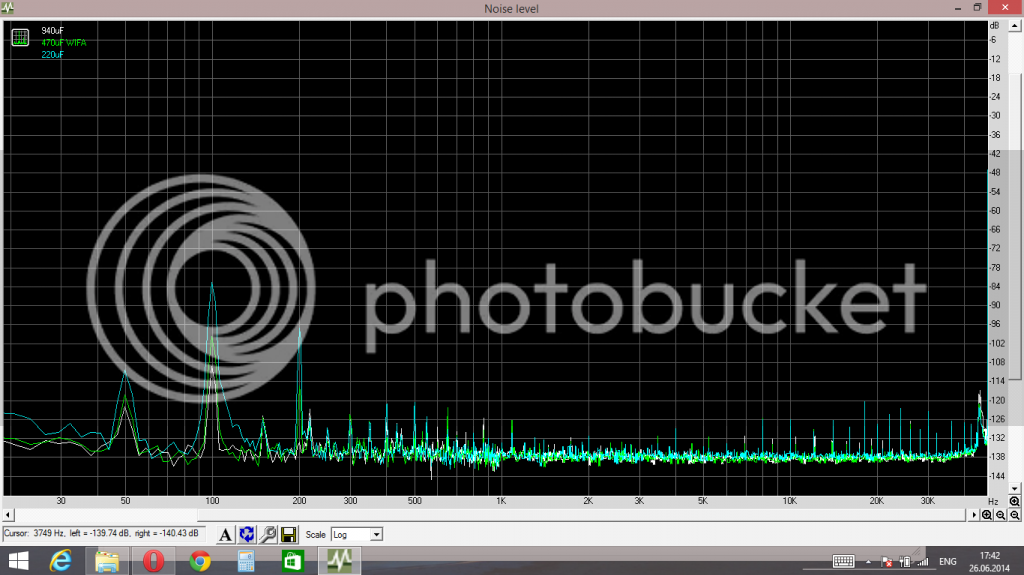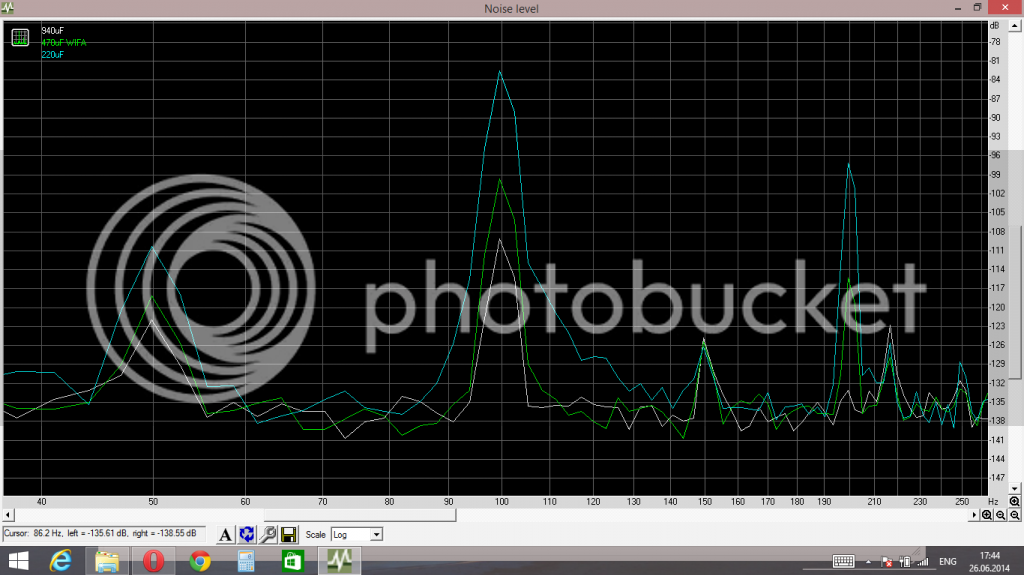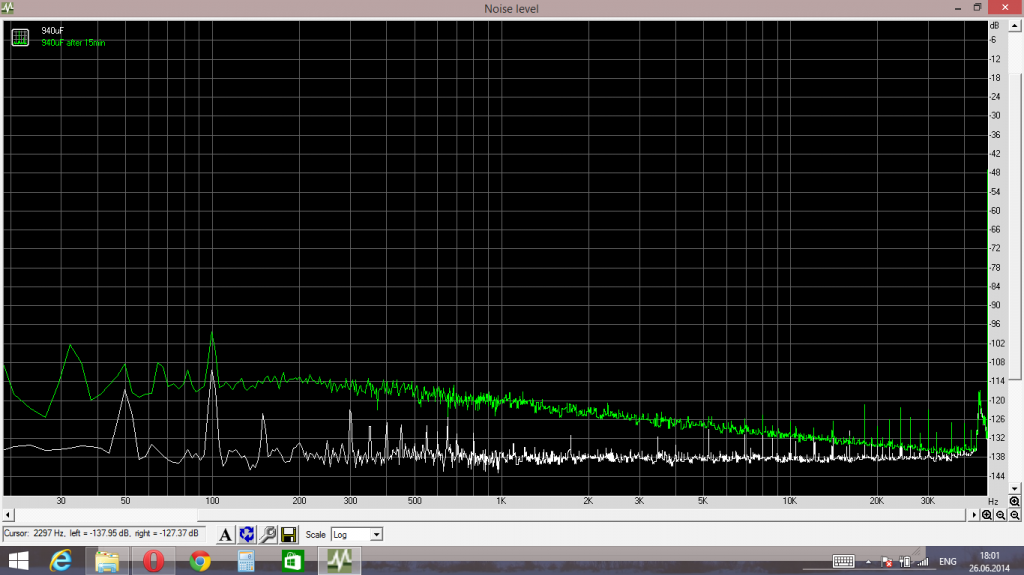You are using an out of date browser. It may not display this or other websites correctly.
You should upgrade or use an alternative browser.
You should upgrade or use an alternative browser.
The official G9 help thread
- Thread starter gyraf
- Start date
Help Support GroupDIY Audio Forum:
This site may earn a commission from merchant affiliate
links, including eBay, Amazon, and others.
Voodoobeat
Active member
- Joined
- Jun 19, 2013
- Messages
- 30
Hi,
i'm still having problems with the power transformer/HT voltage.
T1 is 15v/30VA and as T2 i've tried a 12v/30VA, 12v/50va which both saturate, resulting in loud buzzing.
With two 15v/30va transformer its quit, but the ht voltage is too low of course.
So can somebody suggest what transformer to user as t2?
thanks
i'm still having problems with the power transformer/HT voltage.
T1 is 15v/30VA and as T2 i've tried a 12v/30VA, 12v/50va which both saturate, resulting in loud buzzing.
With two 15v/30va transformer its quit, but the ht voltage is too low of course.
So can somebody suggest what transformer to user as t2?
thanks
kotopees
Member
Hello! I'm a newbie. Faced with the problem of noise 100 Hz, tried various remedies that found on the forum. Nothing helps. Showed a clear pattern - a decrease of noise after increasing capacity c14, c15. Are connected by two parallel capacitor 470 uF, 940 uF received - the smallest noise, but it still persists. At 940 microfarads in 5 minutes changes the whole frequency response! Greater increase in capacity will not solve the problem.
220uF

blue - 220uF; green - 470uF; white - 940uF


white 940uF, green 940uF 5 minutes after switching

Please give help in finding a solution to the problem!
220uF

blue - 220uF; green - 470uF; white - 940uF


white 940uF, green 940uF 5 minutes after switching

Please give help in finding a solution to the problem!
Voodoobeat
Active member
- Joined
- Jun 19, 2013
- Messages
- 30
check you ht voltage 
Spencerleehorton
Well-known member
Pretty sure I'm getting the same thing here, need to find out what frequency of hum I'm getting.
Will rig it up and so a screen shot as kotopees has done.
My hum is bearable but noticeable at higher levels, also have a similar problem with a stereo 1176.
Regards
Spence.
Will rig it up and so a screen shot as kotopees has done.
My hum is bearable but noticeable at higher levels, also have a similar problem with a stereo 1176.
Regards
Spence.
kotopees
Member
Voodoobeat, I measured the voltage, it is 247 VDC
If such a problem also in 1176, maybe I should not worry and leave G9 with this noise? Or have a chance to eliminate the noise?
All good!
If such a problem also in 1176, maybe I should not worry and leave G9 with this noise? Or have a chance to eliminate the noise?
All good!
kotopees...
Assuming you are in Russia not Florida because your noise would be at 60, 120 and 240 if you were in the US where we have 60Hz mains power.
The peaks at 50, 100 and 200 hz are PSU noise and will be decreased (if need be) by better filtering. Better filtering is higher resistance in R37 and/or higher capacitance in C15. You will get a lower output if you increase R37, so you would have to increase the voltage at the regulator to keep all things equal.
Another way to reduce PSU noise is with distance between noise creators and parts of the circuit that undergo large gain. For instance, keep Power wiring tightly twisted, keep away from input transformers, cross any input and power wiring by arranging wiring at a 90 degree angle so that noise transfer is minimized. Keep input wiring short and twisted. Move the power transformer as far from PCB as possible, and keep it away from input wiring. Rotate the transformer (if possible) to see if different positioning reduces noise (transformers are NOT symetrical, even very well made toroidals).
Make sure you are testing with a dummy test load on the input of some kind (150 Ohms or some low resistance across the mic input) or testing using the DI input which does not need to be heavily loaded.
There is no scale on the graphs so I can't tell whether this noise is serious or not. Some noise is expected, and in a well designed circuit the most noise will probably fall to various harmonic multiples of the PSU frequency (50 Hz). So is this hum you are hearing, or is this just the biggest peak in a quiet preamp?
What do you mean by the "after 5 minutes" comments and graph. Does the response change after 5 minutes? Does it change quickly? Can you hear it? Are you sure it is not a test setup problem (instrumentation rather than an actual change)?
Assuming you are in Russia not Florida because your noise would be at 60, 120 and 240 if you were in the US where we have 60Hz mains power.
The peaks at 50, 100 and 200 hz are PSU noise and will be decreased (if need be) by better filtering. Better filtering is higher resistance in R37 and/or higher capacitance in C15. You will get a lower output if you increase R37, so you would have to increase the voltage at the regulator to keep all things equal.
Another way to reduce PSU noise is with distance between noise creators and parts of the circuit that undergo large gain. For instance, keep Power wiring tightly twisted, keep away from input transformers, cross any input and power wiring by arranging wiring at a 90 degree angle so that noise transfer is minimized. Keep input wiring short and twisted. Move the power transformer as far from PCB as possible, and keep it away from input wiring. Rotate the transformer (if possible) to see if different positioning reduces noise (transformers are NOT symetrical, even very well made toroidals).
Make sure you are testing with a dummy test load on the input of some kind (150 Ohms or some low resistance across the mic input) or testing using the DI input which does not need to be heavily loaded.
There is no scale on the graphs so I can't tell whether this noise is serious or not. Some noise is expected, and in a well designed circuit the most noise will probably fall to various harmonic multiples of the PSU frequency (50 Hz). So is this hum you are hearing, or is this just the biggest peak in a quiet preamp?
What do you mean by the "after 5 minutes" comments and graph. Does the response change after 5 minutes? Does it change quickly? Can you hear it? Are you sure it is not a test setup problem (instrumentation rather than an actual change)?
kotopees said:Hello! I'm a newbie. Faced with the problem of noise 100 Hz, tried various remedies that found on the forum. Nothing helps. Showed a clear pattern - a decrease of noise after increasing capacity c14, c15. Are connected by two parallel capacitor 470 uF, 940 uF received - the smallest noise, but it still persists. At 940 microfarads in 5 minutes changes the whole frequency response! Greater increase in capacity will not solve the problem.
220uF

blue - 220uF; green - 470uF; white - 940uF


white 940uF, green 940uF 5 minutes after switching

Please give help in finding a solution to the problem!
kotopees
Member
Hello everyone, I am grateful for the advice and recommendations.
bruce0, you helped me make the final steps to success!Really cause the noise from the power supply. I increased the capacitance of the capacitor C15 to 940 microfarads and resistor R37 to 940 ohms. HT voltage is decreased and amounted to 238 volts
So I rolled up all the cable and put PSU and power transformers as far away from the board. As a result, my 50Hz virtually disappeared, leaving only the 100 and 200.
To check on how much this will feel on hearing I did a test recording. Signal generator hooked Minirator MR2 MR-PRO adapter-40dB through both channels, and to compare recorded using native preamp my sound card E-MU 0404. Maximum volume on F9. Noise is heard, if i turn my monitors or headphones to the maximum, I think it is not critical for the record. On the second channel background is slightly higher, but within acceptable limits.
https://soundcloud.com/alexandr-burakov/sets/test-mic-preamp-gyraf-g9-nti
I am very pleased with the work done. This is my first project in this area. I got a tremendous experience, a pity my grandfather master electronics did not see this amp since 7000 km lives.
Heartily grateful Gyraf for this project, and all members of a forum which serves as an indispensable source of knowledge!
bruce0, you helped me make the final steps to success!Really cause the noise from the power supply. I increased the capacitance of the capacitor C15 to 940 microfarads and resistor R37 to 940 ohms. HT voltage is decreased and amounted to 238 volts
So I rolled up all the cable and put PSU and power transformers as far away from the board. As a result, my 50Hz virtually disappeared, leaving only the 100 and 200.
To check on how much this will feel on hearing I did a test recording. Signal generator hooked Minirator MR2 MR-PRO adapter-40dB through both channels, and to compare recorded using native preamp my sound card E-MU 0404. Maximum volume on F9. Noise is heard, if i turn my monitors or headphones to the maximum, I think it is not critical for the record. On the second channel background is slightly higher, but within acceptable limits.
https://soundcloud.com/alexandr-burakov/sets/test-mic-preamp-gyraf-g9-nti
I am very pleased with the work done. This is my first project in this area. I got a tremendous experience, a pity my grandfather master electronics did not see this amp since 7000 km lives.
Heartily grateful Gyraf for this project, and all members of a forum which serves as an indispensable source of knowledge!
Glad to hear it is working out.
I assume you are doing the test with the lid closed. The metal box around the amp matters, you could be picking up hum from the environment.
Sources of "hum" that are typical, especially if the amp is unshielded because the case is open, are Fluorescent lighting, Electronic Light Dimmers (these can be awful, turn them off), Power Supplies and Wall warts from other equipment.
You will always hear some hiss from a vacuum tube amp at high volume, it is the nature of the beast, but if you are hearing the 100 and 200 hz hum (low frequency hum) you *may* have room for improvement.
I listened to the sound cloud but I only have laptop speakers here and they don't do 100 or 200 hz reproduction.
It is strange that you still get the 100 and 200 hz harmonics with the 50HZ gone, this makes me suspect that you are picking up noise from another source (because if they were just the harmonics of the 50Hz PSU noise, then they should also reduce.)
So box up the amp in a steel box (ideally), move it away from other equipment, turn off the fluorescent lights and move the wall warts and computers away from the amp. Distance is the best shielding. If you double the distance you divide the signal by 4 (square of the distance). So if you have a wall wart 10 cm away from the amp and you move 40cm away, any noise it creates is divided by 16!
Anyway, if you can't hear the hum it is ok, but I am a noise floor freak and I would forgive you if you kept looking for the source of those peaks ;D
(PS...Mail your grandfather a printed picture.)
I assume you are doing the test with the lid closed. The metal box around the amp matters, you could be picking up hum from the environment.
Sources of "hum" that are typical, especially if the amp is unshielded because the case is open, are Fluorescent lighting, Electronic Light Dimmers (these can be awful, turn them off), Power Supplies and Wall warts from other equipment.
You will always hear some hiss from a vacuum tube amp at high volume, it is the nature of the beast, but if you are hearing the 100 and 200 hz hum (low frequency hum) you *may* have room for improvement.
I listened to the sound cloud but I only have laptop speakers here and they don't do 100 or 200 hz reproduction.
It is strange that you still get the 100 and 200 hz harmonics with the 50HZ gone, this makes me suspect that you are picking up noise from another source (because if they were just the harmonics of the 50Hz PSU noise, then they should also reduce.)
So box up the amp in a steel box (ideally), move it away from other equipment, turn off the fluorescent lights and move the wall warts and computers away from the amp. Distance is the best shielding. If you double the distance you divide the signal by 4 (square of the distance). So if you have a wall wart 10 cm away from the amp and you move 40cm away, any noise it creates is divided by 16!
Anyway, if you can't hear the hum it is ok, but I am a noise floor freak and I would forgive you if you kept looking for the source of those peaks ;D
(PS...Mail your grandfather a printed picture.)
kotopees
Member
Yes, indeed I have fluorescent lamps and computers. When I do the final assembly, take readings at the lamp-off and away from pulse power supply units. Just plan to buy mu-metal foil shield power transformers. Maybe the sound card E-MU is not high class and is the source of the noise, try to measure other sound cards.
kotopees said:Yes, indeed I have fluorescent lamps and computers. When I do the final assembly, take readings at the lamp-off and away from pulse power supply units. Just plan to buy mu-metal foil shield power transformers. Maybe the sound card E-MU is not high class and is the source of the noise, try to measure other sound cards.
Mu-Metal is not magic.
Distance is magic.
steeneren
New member
- Joined
- Aug 10, 2014
- Messages
- 4
Having noise problems with my G9 
Just fired it up after a year not using it, and found out that it has a noise similar to one of the transformers.
Gain and volume are turned to zero.
I get 315v at C14 and 300v at C15 and 300v at r31/131
Where there's supplere to be 245v, don't know if that's an issue.
Anyone?
https://www.dropbox.com/s/c70rwurkc2u79w3/VIDEO0055.mp4
Just fired it up after a year not using it, and found out that it has a noise similar to one of the transformers.
Gain and volume are turned to zero.
I get 315v at C14 and 300v at C15 and 300v at r31/131
Where there's supplere to be 245v, don't know if that's an issue.
Anyone?
https://www.dropbox.com/s/c70rwurkc2u79w3/VIDEO0055.mp4
Spencerleehorton
Well-known member
Gyraf g9 hum fixes
Replace 100uf/400v to 470uf/400v c14 and c15
you could try to leave out the regulator and replace it with a (2w) resistor. something like 10k, maybe less for two channels.
measure volts after the rectifier and milliamps after the regulator for finding the correct value. add another rc stage for more ripple rejection. dont forget a bleeder (something like 150k 2w)
when i breadboarded the g9 for testing i did this (couldnt find a tl783 at that time)
Measure B+ with DMM in AC mode to find ripple voltage.
Check ripple before and after regulator
0,25V after TL783, after 5 sec (and goes up ...)
0,3V before TL783
I have 0.18V ripple before (220uF filtercap) the regulater and 0,0000V after (another 220uF smoothingcap) the regulator. For the measurement you have to wait around a minute until the tube is heated and the quiescent current is biased.
But anyway, obviously you´d better change your regulator.
:grin: Finally solved problem!
At first i changed the rectifier without success.
Second, I changed the caps! Was quite Perfect!
now the sound is perfect, no 100Hz hum noise. Thank yu guys for the suggests!
Change C14 and C15
Replace 100uf/400v to 470uf/400v c14 and c15
you could try to leave out the regulator and replace it with a (2w) resistor. something like 10k, maybe less for two channels.
measure volts after the rectifier and milliamps after the regulator for finding the correct value. add another rc stage for more ripple rejection. dont forget a bleeder (something like 150k 2w)
when i breadboarded the g9 for testing i did this (couldnt find a tl783 at that time)
Measure B+ with DMM in AC mode to find ripple voltage.
Check ripple before and after regulator
0,25V after TL783, after 5 sec (and goes up ...)
0,3V before TL783
I have 0.18V ripple before (220uF filtercap) the regulater and 0,0000V after (another 220uF smoothingcap) the regulator. For the measurement you have to wait around a minute until the tube is heated and the quiescent current is biased.
But anyway, obviously you´d better change your regulator.
:grin: Finally solved problem!
At first i changed the rectifier without success.
Second, I changed the caps! Was quite Perfect!
now the sound is perfect, no 100Hz hum noise. Thank yu guys for the suggests!
Change C14 and C15
Just wanted to let you guys know I now have G9 cases added to my stock. I had a number of guys recently request them so I finally made up a bunch. Just email if you are interested.
Thanks
Thanks
steeneren
New member
- Joined
- Aug 10, 2014
- Messages
- 4
Spencerleehorton said:Gyraf g9 hum fixes
Replace 100uf/400v to 470uf/400v c14 and c15
you could try to leave out the regulator and replace it with a (2w) resistor. something like 10k, maybe less for two channels.
measure volts after the rectifier and milliamps after the regulator for finding the correct value. add another rc stage for more ripple rejection. dont forget a bleeder (something like 150k 2w)
when i breadboarded the g9 for testing i did this (couldnt find a tl783 at that time)
Measure B+ with DMM in AC mode to find ripple voltage.
Check ripple before and after regulator
0,25V after TL783, after 5 sec (and goes up ...)
0,3V before TL783
I have 0.18V ripple before (220uF filtercap) the regulater and 0,0000V after (another 220uF smoothingcap) the regulator. For the measurement you have to wait around a minute until the tube is heated and the quiescent current is biased.
But anyway, obviously you´d better change your regulator.
:grin: Finally solved problem!
At first i changed the rectifier without success.
Second, I changed the caps! Was quite Perfect!
now the sound is perfect, no 100Hz hum noise. Thank yu guys for the suggests!
Change C14 and C15
Changed C14 and C15 and tl783... Voltage seems okay now.
Still the same buzz.. Damn
https://www.dropbox.com/s/gicsowidwgbgfpp/VIDEO0056.mp4
Spencerleehorton
Well-known member
hi dan,
where is your GND from main pcb to star ground?
regards
Spence
where is your GND from main pcb to star ground?
regards
Spence
Deepdark
Well-known member
Awesome Dan  Do you have a picture to show us the case? How much?
Do you have a picture to show us the case? How much?
psychedelnick
Member
Quick thought. I had a hum problem in Channel 1 of my G9. I looked around for a long time until I found the problem to be the 1/4" switched input was bent open. I bent it back so that it would close to the tip when not in use and voila! No hum. No problem. Another place to check if you haven't already. PS going direct through this baby with anything sounds so good! Thanks Gustav!
Similar threads
- Replies
- 6
- Views
- 1K
- Replies
- 1
- Views
- 1K
- Replies
- 3
- Views
- 1K






















![Soldering Iron Kit, 120W LED Digital Advanced Solder Iron Soldering Gun kit, 110V Welding Tools, Smart Temperature Control [356℉-932℉], Extra 5pcs Tips, Auto Sleep, Temp Calibration, Orange](https://m.media-amazon.com/images/I/51sFKu9SdeL._SL500_.jpg)











